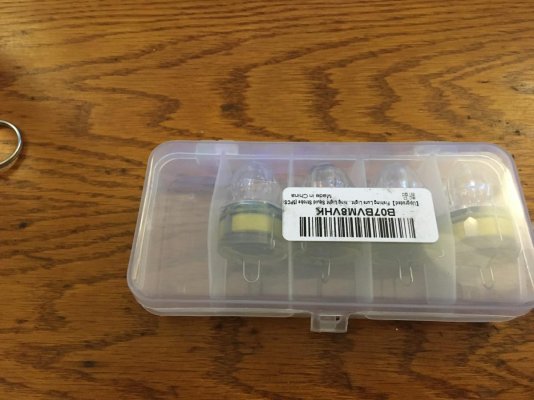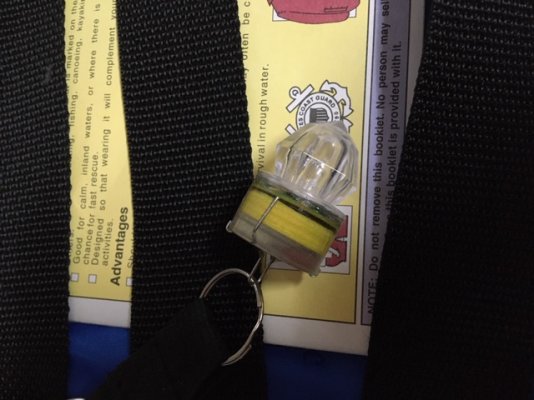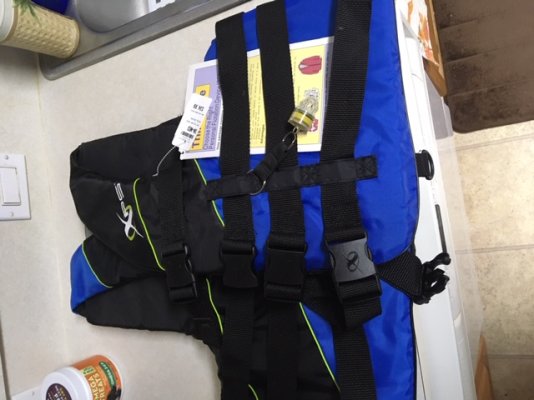stubones99
Guru
I purchased a pack of blinking LED fishing lure lights from amazon.
https://www.amazon.com/gp/product/B07BVM8VHK
For 5 of them, it was $17 bucks.
They are designed to be clipped to your fishing line and when they hit the water, the two contacts start conducting electricity using the water to bridge the gap between the two contacts and the led starts blinking a random color pattern. As long as the device is in the water, it blinks.
I clipped it to life preservers, up high, so if you get dunked, it blinks. Even though it isn't terribly bright, any light at night would be helpful. It is automatic, and as long as there is water on the contacts, the light is blinking, for up to 800 hours. 800 hours in the water, you have more problems than the battery...
Easy to test the unit, just wet two fingers and touch the two contacts on the sides of the unit. If the battery is OK, it will blink a colored light. If not blinking, replace it.
The batteries are not replaceable, and are molded into the unit and sealed with clear epoxy so you get a waterproof unit good for years, and hours of light life if needed.
Sure, it's not designed for a life preserver, and the loop where it hooks on isn't terribly thick, but it appears to be stainless steel wire into the epoxy.
It would be better to have a more durable light, but the cost is low, so you can equip every life preserver with a light for cheap.
There are some lights like this that have a AA or AAA replaceable battery, but that adds a lot of bulk to the light, and unless you use lithium batteries, chances are, within a year or so, the AA or AAA battery will corrode the device contacts...
https://www.amazon.com/gp/product/B07BVM8VHK
For 5 of them, it was $17 bucks.
They are designed to be clipped to your fishing line and when they hit the water, the two contacts start conducting electricity using the water to bridge the gap between the two contacts and the led starts blinking a random color pattern. As long as the device is in the water, it blinks.
I clipped it to life preservers, up high, so if you get dunked, it blinks. Even though it isn't terribly bright, any light at night would be helpful. It is automatic, and as long as there is water on the contacts, the light is blinking, for up to 800 hours. 800 hours in the water, you have more problems than the battery...
Easy to test the unit, just wet two fingers and touch the two contacts on the sides of the unit. If the battery is OK, it will blink a colored light. If not blinking, replace it.
The batteries are not replaceable, and are molded into the unit and sealed with clear epoxy so you get a waterproof unit good for years, and hours of light life if needed.
Sure, it's not designed for a life preserver, and the loop where it hooks on isn't terribly thick, but it appears to be stainless steel wire into the epoxy.
It would be better to have a more durable light, but the cost is low, so you can equip every life preserver with a light for cheap.
There are some lights like this that have a AA or AAA replaceable battery, but that adds a lot of bulk to the light, and unless you use lithium batteries, chances are, within a year or so, the AA or AAA battery will corrode the device contacts...
Attachments
Last edited:





